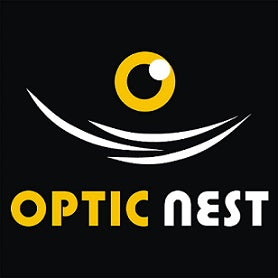Blog RSS
“Seamless Vision: The Advantages and Innovations of Progressive Lenses”
"A Clearer Tomorrow: Introducing Stellest Lenses to Combat Childhood Myopia in India"
Stellest lenses, introduced by Essilor in India, are designed to address the increasing problem of myopia (nearsightedness) in children. These lenses employ Highly Aspherical Lenslet Target (H.A.L.T.) technology, which features 1021 aspherical lenslets arranged in 11 rings. This innovative design focuses light in a way that reduces the stress on the eye that contributes to myopia progression. Clinical studies have shown that when worn for 12 hours a day, Stellest lenses can reduce the progression of myopia in children by an average of 67% compared to traditional single vision lenses.
The lenses were launched in India in 2023 and are priced at Rs 16,500. They are available through Essilor’s certified Expert stores and selected hospitals in major cities. This introduction aims to help manage myopia progression among children, thereby protecting their vision for the future and reducing the risk of more severe eye problems associated with high myopia.
#StellestLensesIndi #MyopiaContro #ChildhoodMyopi #EssilorIndi #VisionCare #EyeHealt #ProtectTheirVision#OpticalInnovation#HealthyEyes#VisionForTheFuture
"Visionaries in Optics: The Bausch and Lomb Legacy"
Understanding Myopia: Causes, Consequences, and Modern Management | Optic Nest | Optician in Bangalore
"Visionary Beginnings: The Oakley Story from Garage to Global Icon"
- Oakley Journey - (Foundation in 1975): James Jannard starts Oakley out of his garage with $300, naming it after his dog, Oakley Anne. The company initially focuses on manufacturing motorcycle grips made from a patented material called Unobtainium.
-
Entry into Eyewear in 1980: Oakley introduces its first pair of eyewear, the "O-Frame" goggles, becoming a hit among motocross enthusiasts.
-
Expansion into Sunglasses in 1984: The brand launches "Eyeshades," sunglasses designed to offer broad peripheral vision and protection, catering to the sports and outdoor market.
-
Technological Innovations: Throughout its history, Oakley has been known for its advanced materials and design, featuring high-impact resistance and UV protection in its sunglasses.
-
Growth in Product Lines in the 1990s and 2000s: Oakley expands to include apparel, other accessories, and prescription glasses, gaining endorsements from athletes across various sports.
-
Acquisition by Luxottica in 2007: Luxottica Group acquires Oakley for approximately $2.1 billion, enhancing Oakley's global distribution and manufacturing capabilities.
-
Modern Day: Oakley continues to be a leader in high-performance lenses and frames, renowned for durability, comfort, and style in sports and outdoor activities.
This timeline not only highlights Oakley's strategic moves but also showcases its sustained innovation and growth in the competitive eyewear market.




